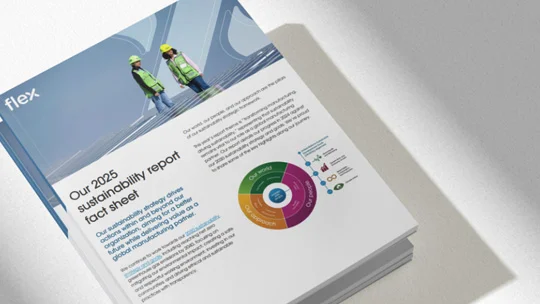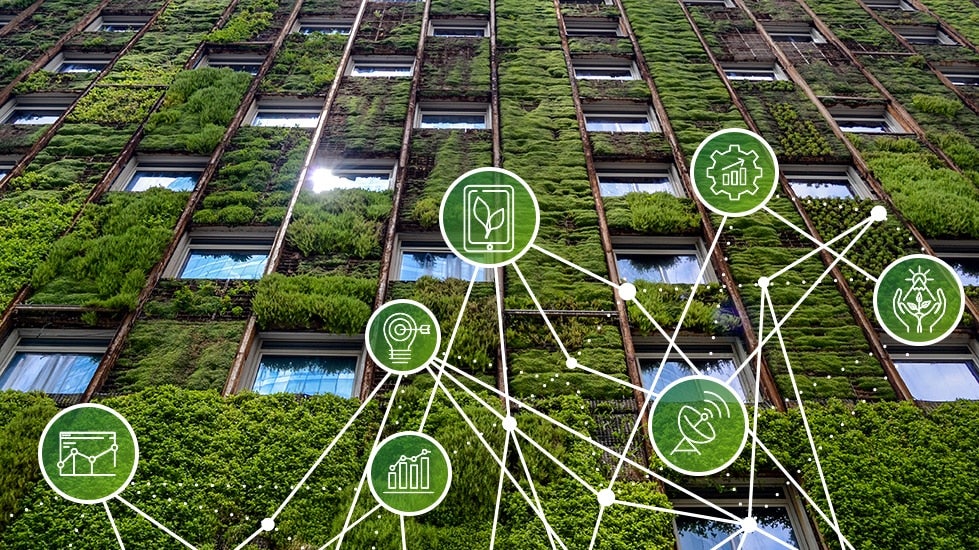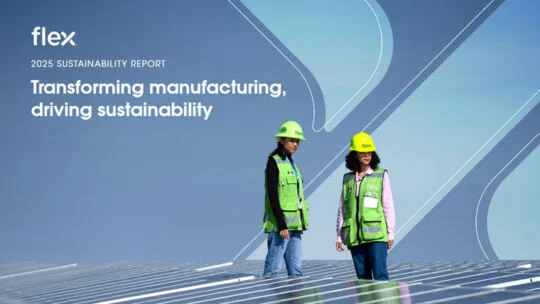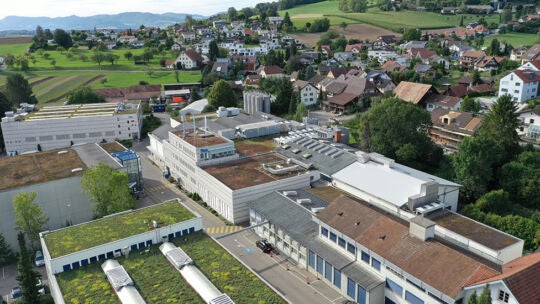
数据是推动可持续发展计划的动力,使公司能够追踪绩效、向利益相关者汇报并做出可衡量的改进。如今,可持续发展指标仍然是重中之重,投资者、客户和员工都将其作为衡量品牌价值和风险的标准。
许多组织正在努力解决如何衡量可持续发展目标的进展以及如何收集这些指标的问题。此外,首先确定要衡量的内容以及收集数据的方法至关重要。
这篇文章回顾了一些数据收集的最佳实践,这是可信、透明和可操作的可持续发展计划的关键。

识别数据
在收集数据之前,必须确定要测量什么。
鉴于当今组织内部蕴藏着海量数据,且公司在经营过程中可能触及的可持续发展领域范围广泛,企业很容易被各种可能收集的数据分散注意力。为了保持专注,必须将数据收集工作与战略保持一致。重要性评估已在 另一篇文章是此阶段的重要驱动因素。收集的数据应与组织目标相联系,而组织目标又能反映对业务最为关键的问题。
由于重要性分析和目标决定了要跟踪哪些指标,因此组织将参考完善的报告框架来指导数据收集方法(见下文)。
您获取的数据将属于以下类别之一:
- 环境指标是最直接的,因为它们已经建立并易于理解。例如,CDP环境披露平台已投入使用多年,该平台收集企业关于气候变化和其他环境风险的标准化信息。同样,全球报告倡议组织(GRI)也制定了被广泛采用的可持续发展报告标准,用于可持续发展信息披露。
- 收集社会指标的实践尚不成熟,部分原因是隐私法规以及其他基于区域需求的考量。值得注意的是,目前正在努力协调信息披露、方法和标准,以传达对人权和劳工实践等问题的影响。
- 随着道德、治理和反腐败方面的信息披露越来越标准化,治理数据也变得更加明确。
除了可持续性指标(参见 GRI 的通用基准),还有一些特定行业的指标需要考虑;值得注意的是,GRI 将为 40 个行业制定标准指标在Flex,我们收集的一些指标基于行业实践,包括范围1、2和3的排放量、取水量、排水量和消耗量、废弃物量以及全球培训时长。在治理指标中,我们审查员工遵守以下标准的百分比:负责任商业联盟(RBA)休息日要求和完成社会和环境审计的场地百分比。
对于刚刚起步的组织,方法应该明确范围。制定路线图并确定所需数据的优先级,以便随着时间的推移不断获取和扩展这份清单,这一点至关重要。十多年前,当我们的可持续发展报告工作初具规模时,第一步是确定我们需要追踪的全球所有 Flex 设施。之前的重点是收集基线环境数据,例如每个工厂的用电量和产生的废物量。如今,我们追踪大约 70 个环境影响指标。
操作化数据收集
由于可持续发展项目的数据分散在整个企业,因此必须与财务、设施、法务和其他职能部门的合作伙伴携手合作,以落实数据收集工作。在 Flex,每个工厂还任命了一位可持续发展负责人,负责共享工厂数据并与我们的项目办公室紧密合作。
为了减少工作流程摩擦并满足稳健可持续发展项目的数据需求,构建一个用于收集、管理和报告数据的基础架构至关重要。鉴于可持续发展信息披露的需求日益增长,集中式数据平台对于简化数据收集至关重要。如今,许多现成的解决方案可用于支持可持续发展报告。
我们的可持续发展团队自2011年以来一路前行,当时他们仍在通过电子邮件和手动电子表格收集数据。随着团队工作的日臻成熟,他们设计了一个内部集中式数据库,并辅以底层流程和程序,以确保在Flex的全球业务范围内采集数据的一致性和统一的工作流程。这项历时多年的工作,凝聚了与IT部门和其他内部合作伙伴的深度合作。
在从供应商收集外部可持续性数据方面,Flex 的供应链可持续性团队会根据 RBA 的方法,与我们的首选供应商名单 (PSL) 上的供应商进行沟通。此流程始于供应商完成供应商自我评估问卷他们的回答将产生一个总体分数和风险分数;如果这些分数达到阈值,就需要在供应商所在地进行审核,并采取规定的措施。
我们持续探索各种方法,以深入了解我们的供应商在遵守可持续发展标准方面的表现。例如,我们正在评估一些系统,这些系统能够提供供应链在多个可持续发展领域表现的整体概览。
虽然我们仍在成长和学习,但我们在与供应商建立深度合作以推进我们共同的可持续发展目标方面发挥了领导作用,对此我们深感自豪。去年,我们与CDP合作,邀请我们的PSL供应商报告其碳排放量。由于我们积极主动的努力,Flex已获得CDP的“供应商合作领导者”称号。
标准化数据格式
为了使利益相关者能够分析和利用披露信息,数据标准化必不可少。如果业务遍布全球,这项任务可能极具挑战性。鉴于Flex的业务遍布全球,标准化工作的范围非常广泛。例如,如果我们遍布全球的机构都以本国货币记录慈善捐款,则所有机构都需要将其转换为符合全球报告标准框架标准的货币。同样,英制计量单位也需要转换为公制。为了实现数据标准化的完全自动化,我们采用了一些最佳实践,例如在本地或中央数据库中构建计算器和其他工具,将本地计量单位转换为标准化公制。
全球报告倡议组织、联合国全球契约和 SASB 等资源为符合标准提供了指导。
请参阅以下框架以了解标准合规性和特定行业指标:
设置数据收集的节奏
数据收集的节奏应与企业的规模和复杂程度相匹配。对于像 Flex 这样拥有全球业务的组织,我们必须跟上数据快速增长的速度和数量。而对于在单一地点开发软件的小型企业,可能只需要每季度进行一次数据收集。
在 Flex,我们 100 多家工厂每月都会将其场地数据录入中央数据库。收集的数据包括资源消耗、员工培训和社区服务时长,以及其他每月波动较大的数据。我们每年收集一次波动较小的数据,例如从第三方可再生和不可再生能源购买的电力占比,以及按水源取水占比等。
我们每月都会通过内部记分卡将数据投入使用,该记分卡会根据每个工厂的最新输入进行计算。在与来自不同地区和国家的多个工厂可持续发展负责人举行的月度会议上,我们会回顾他们最新的可持续发展绩效,并分享改进建议。借助最新数据,每个工厂都能明确改进机会,并确定下一步行动。
谈到可持续发展工作,有句格言“你无法管理你无法衡量的事情”也适用于我们的方法。数据收集对于了解我们的运营如何影响世界至关重要。只有通过收集和基准测试数据,我们才能开始追踪进展。
确保数据完整性
在收集数据时,建立对其完整性的信心也至关重要。如果数据是建立信任和告知任何可持续发展项目进展的货币,那么我们的价值就取决于我们的数据。
这意味着,实施稳健的数据管理实践至关重要,以确保数据的完整性、可靠性、可信度和安全。近年来,大数据和自动化技术的兴起使得数据管理更加便捷。企业可以与IT部门合作,开发能够提升数据完整性的解决方案。这包括确保系统拥有良好的数据卫生,能够检测异常,并通过在数据发布时自动检索数据来最大限度地减少人为错误。我们将更详细地讨论审计和其他数据验证机制。 在我们的下一篇文章中。
随着可持续发展成为主流,对更具体信息的需求也日益增长,这为我们调整数据收集实践提供了机会。即使最成熟的可持续发展项目也存在需要改进的地方,无论是精简流程、提高数据准确性,还是改善协作。组织必须根据重要性评估制定战略和目标,以确定哪些因素最为关键,并围绕此设计数据工作。此外,至关重要的是消化数据以了解绩效,并确定如何更新可持续发展路线图,从而吸引合作伙伴参与短期和长期改进。
这是一项艰巨但必要的工作。通过认真衡量和了解我们的运营对地球的影响,我们能够采取必要的行动,建设一个更健康、更包容、能够惠及子孙后代的世界。



